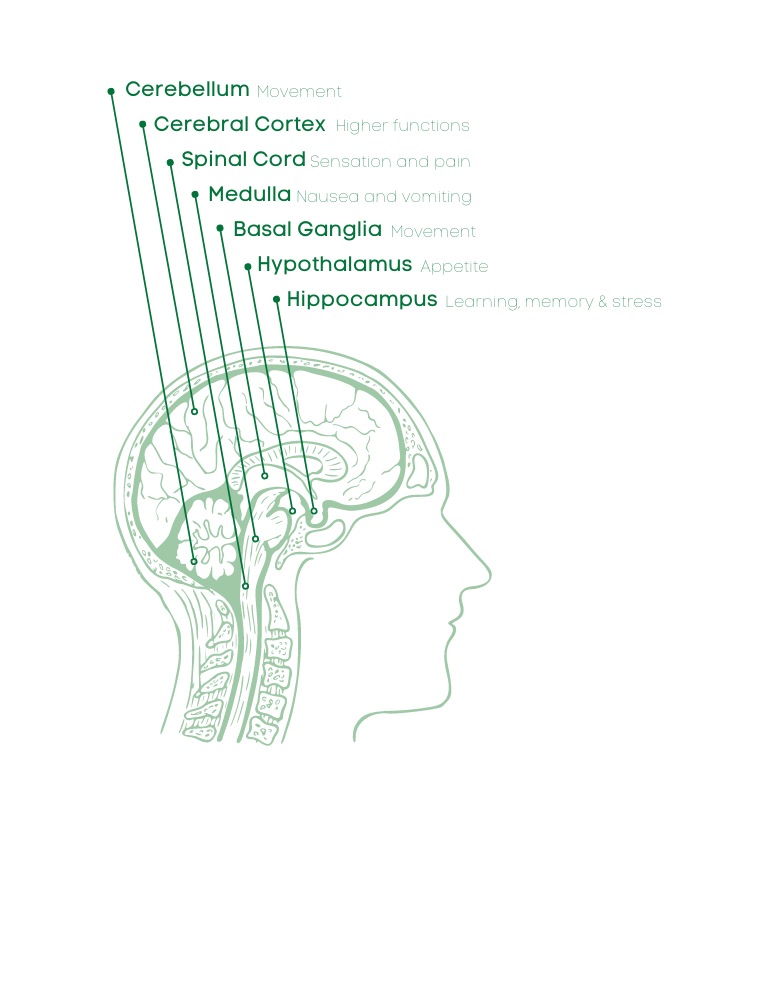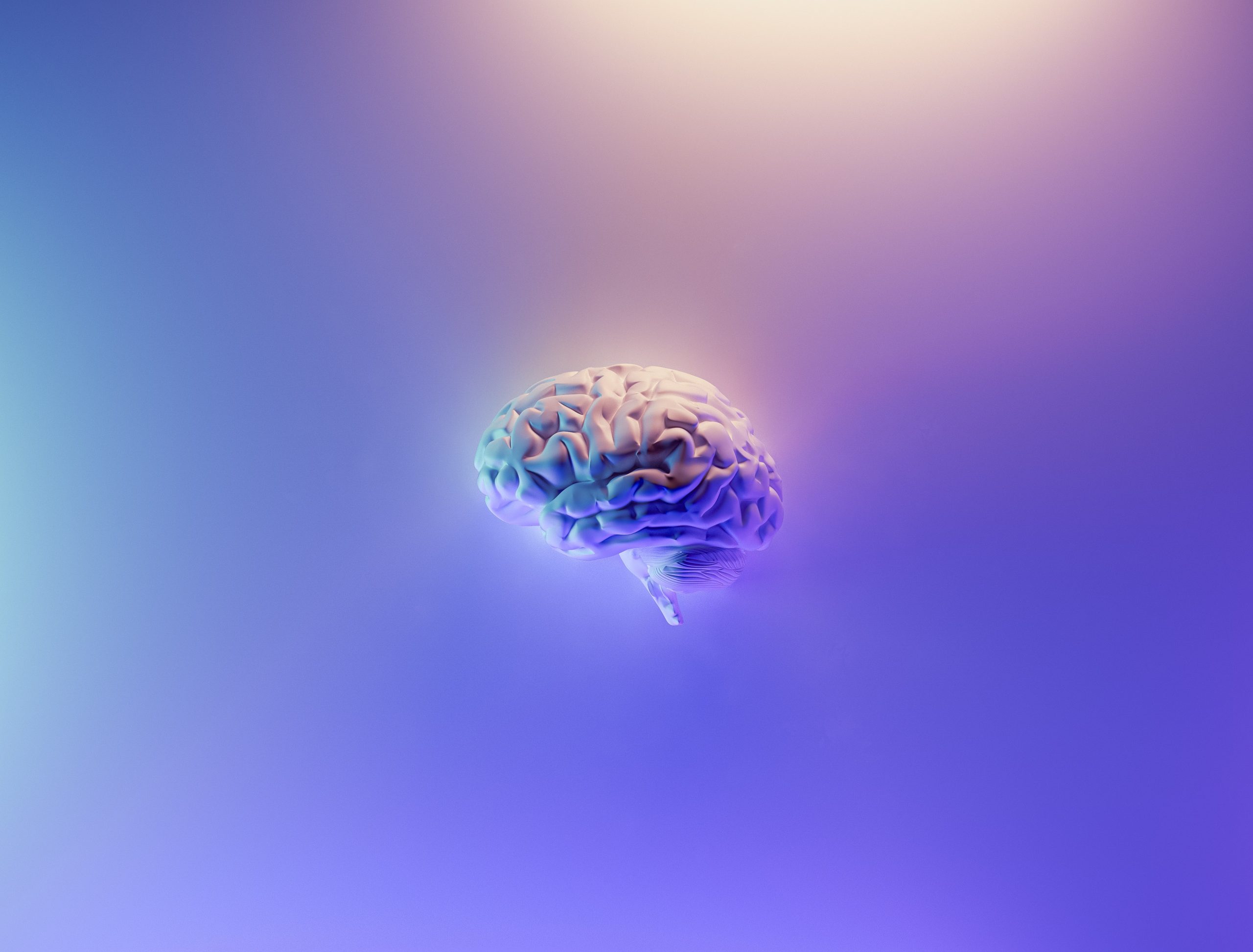Why do cannabinoids from the Cannabis plant interact with our body, and how do they produce the effects they do?
That’s because the human body has its own cannabinoid system consisting of endocannabinoids (cannabinoids produced inside our body) and receptors. When functioning correctly these interactions can help the body maintain homeostasis. They also play an important role in neuromodulation and may be disrupted in various disease states.
Unlike most neurotransmitters, endocannabinoids are not stored in vesicles but are produced on demand by enzymes in response to stress. High calcium concentrations in the neuron can trigger excessive “firing”. When endocannabinoids engage and do their work, they get the neuron back into balance and homeostasis again. However, the regulation (e.g. production & breakdown) of endocannabinoids may malfunction due to numerous circumstances.
Lets start with the firing process of neurons, the fundamental way of how information is transported throughout body.
Firing basically means that a neuron receives information from another one through neurotransmitters and then relays that information further to others. For the neuron to relay the information, it needs to change its electric charge, reaching a certain threshold (-55mV). Once this threshold is reached, the neuron “fires”, meaning the information travels down from the receiving end of the neuron to the relaying end, where it causes the release of its own neurotransmitters. Different neurotransmitters are used by the body to relay different kinds of information.

Once the neuron has fired it needs to go back to its pre-activated (idle) state. Here are where (among other things) cannabinoids come into play.
But: no receptors, no effect.
Our body has two receptors that cannabinoids can bind to, which are named CB1 & CB2. Both are coupled with a G-protein on the inside of a cell that will unbind upon activation of the receptor and cause a rippling effect. This means it activates a chain of further intracellular activity that usually counteracts the “firing process”, being able to settle down excessive signaling and restore balance.
CB1 receptors are found all around the central nervous system while CB2 is found primarily in the periphery and immune cells. Depending on the type of cell and its location (i.e neurons in different areas of the brain or immune cells in different areas of the body), the binding and activation of those receptors can cause their own unique effects.

So, how does that work then?
The activation of the CB1 or CB2 receptors (binding of cannabinoids) will release the G-protein that binds to and inhibits a nearby intracellular receptor called adenylyl cyclase. This receptor usually transforms ATP (Adenosine triphosphate) into cAMP (Cyclic Adenosine Monophosphate) if other G-proteins bind to it. cAMP is an important intracellular messenger that can do various things, one of which is causing the neuron to fire, relaying information. Inhibiting adenylyl cyclase subsequently reduces cellular cAMP levels.

Endocannabinoids can act as regulators to get the cell into an idle state again.
Now, lets talk about phytocannabinoids
There are approximately 140 – 160 phytocannabinoids present in various plants, including Cannabis Sativa. The most well-researched phytocannabinoids are Delta-9-tetrahydrocannabinol (Δ9-THC) and Cannabidiol (CBD).
Many other cannabinoids may contribute to and modulate the therapeutic effect of Delta9-THC and CBD through the entourage effect (compounds work synergistically to produce an additive effect).
Can the plant compounds interact with our endocannabinoid system?
The simple answer is yes, to a certain extent. Different conditions can cause the endocannabinoid system to malfunction, thus no longer modulating and balancing out certain cell activity. This can lead to illness and disease.
Phytocannabinoids may help to a certain degree with this regulation, as they can mimic the endocannabinoids and bind to CB1 and CB2 receptors.
They can take over the job endocannabinoids are supposed to do. Depending on the type of cell and where it is located, this can lead to various effects. Phytocannabinoids can also inhibit the production of enzymes that would break down endocannabinoids like Anandamide. This means the concentration of endocannabinoids can stay active for a longer period of time.

The scientific community is yet to fully understand in how many ways phytocannabinoids interact with the endocannabinoid system on a molecular level. However, the foundation for building cause and effect relationships between phytocannabinoids and potential therapeutic benefits has been laid out with the discovery of the endocannabinoid system.
References:
- https://www.ncbi.nlm.nih.gov/pmc/articles/PMC2931553/
- https://pharmrev.aspetjournals.org/content/58/3/389?TB_iframe=
- https://d1wqtxts1xzle7.cloudfront.net/43377857/Discovery_and_Isolation_of_Anandamide_an20160304-5867-ds0gl5.pdf?1457158125=&response-content-disposition=inline%3B+filename%3DDiscovery_and_Isolation_of_Anandamide_an.pdf&Expires=1627388641&Signature=ZRyVJ42cYdmLX87rX0jN4FUyh6uM8vbvKyYD19bUzCokREV3Vb77O6fDmfhTT9JjUp6Doty5SAs3ZN1aCeAIYepnTAYVEYXNaKyY~ft240-poWayJc7udbW3i-llbA96LfAPWxhcVO3SmkKa0~SXEhD2ukM6ezNBdFZ56LGzZrMsJ9t~-qn5cYlDnElV6qEZi57xX5nYyOyGEF3CDOJrgZ7FJDyF8iou6JIXQAMY4xclMB4~IKuoTnIjPxbw6uh-LzDz9xX9z135N7a66oYrlMrSu8I4jLdt2gsEV9hdOH-D4Nuvr0ka~TYLqn9PJ3fUQrMF~-dqSSuGmR3Zgf6XTw__&Key-Pair-Id=APKAJLOHF5GGSLRBV4ZA
- https://www.sciencedirect.com/science/article/abs/pii/S0169328X04004024
- Visualisations: https://www.osmosis.org/
_
Disclaimer: With very few exceptions, medicinal cannabis is not an approved medicine in Australia and the TGA has not assessed them for safety, quality or effectiveness. Speak to your doctor to see whether medicinal cannabis is right for you. For regulatory approved information, please visit https://www.tga.gov.au/medicinal-cannabis-guidance-documents
